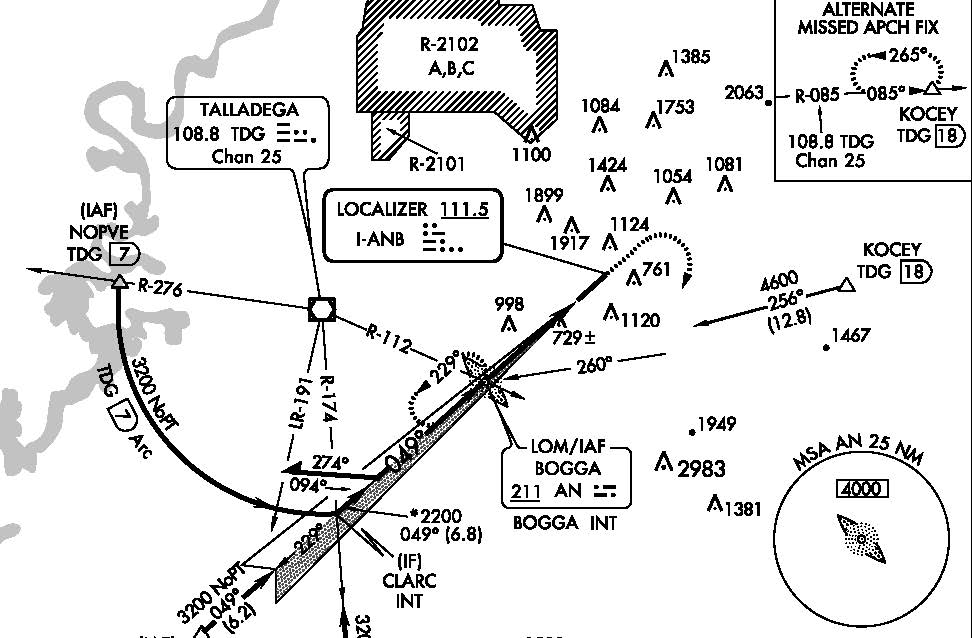
Now it’s clear why your instrument instructor asked you on the phone last night for confirmation that all your nav systems were working for today’s proficiency flight.
As you review the ILS RWY 5 approach to the Anniston (Ala.) Regional Airport, it becomes obvious that you will need a full panel to complete the procedure—and it even contains a missed-approach segment flown on a published heading to the next navaid-based course.
There are four initial approach fixes, but you’d guess that your CFII will request clearance to NOPVE. Sure enough, that is what is requested and approved, requiring you to fly a 7-DME arc from the Talladega VOR 276-degree radial to localizer intercept at CLARC.
Good thing you spent some quality ground time analyzing the approach with its nuances, equipment requirements, and unusual combinations of navaid use.
Also, that small arc—only 7 DME from the VOR—will unfold quickly. Stay alert to CDI movement as you approach the 191-degree lead radial. On this arc, 17 degrees of bearing change between the LR and the intermediate fix (IF) will be covered in about two nautical miles. (What is the smallest radius of a DME arc when the arc is an initial segment of an instrument approach?)
Then there’s the unusual four-step published missed approach: a straight-ahead climb to 1,600 feet followed by a climb to 4,000 feet on heading 110 degrees until intercepting the 260-degree NDB bearing; track it to BOGGA. (At least that way of arriving sets you up for a nice teardrop entry to the holding pattern.)
To complete your preflight homework assignment, your instructor asked you to read the report of a near-midair collision on the same approach course that highlighted a communications concern at the airport.
A military aircraft practicing the approach under VFR was outbound on the LOC course. A commuter aircraft was inbound, IFR. The airport has a common traffic advisory frequency (123.6 MHz), but the commuter may have been tardy calling in. Anniston Flight Service, therefore, couldn’t provide the military aircraft with an airport advisory about it.
A "miss distance" of as little as 500 feet may have been all that separated the aircraft before they spotted each other (thanks to a glint of sunlight on a wing) and took evasive action, said an Aviation Safety Reporting System report that described the scenario, including much indignant finger-pointing all around.



